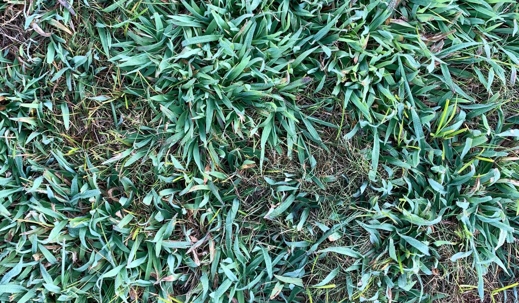Common Florida Weeds and How to Kill Them
Florida's warm climate is an open invitation for various weeds to thrive in gardens and lawns. One of the most common weeds in Florida is crabgrass, known for its fast growth and ability to take over spaces quickly.
Due to the persistence of these invaders, homeowners often find it challenging to maintain their lawns weed-free.
What are the best ways to kill them and keep your garden pristine? Keep reading to discover effective strategies for combating these pesky plants and saving your outdoor spaces.
Key Takeaways
- In Florida, highly invasive weeds such as Crabgrass and Goosegrass spread quickly and are difficult to control, demanding timely and specific treatments.
- Dandelions, Spurge, and Chickweed represent common nuisance weeds in Florida, each capable of overtaking lawns if not managed early and effectively.
- Persistent weeds like Dollarweed and Beggarweed flourish in Florida's climate, requiring integrated management strategies to curb their growth effectively and spread.
Highly Invasive Florida Weeds
In Florida, some lawn weeds are particularly intrusive, rapidly spreading, and challenging to control.
Crabgrass
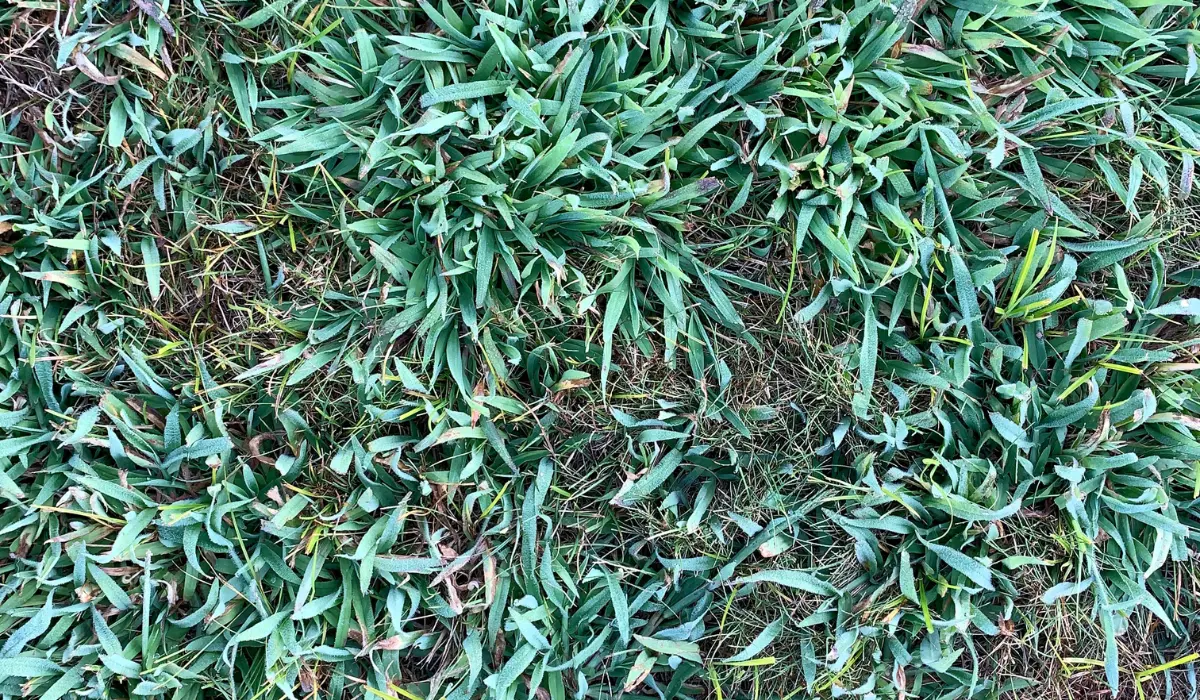
Crabgrass is a summer annual weed notorious in Florida. It thrives in lawns and agricultural fields, competing aggressively with desired plants for nutrients and space.
They flourish in hot, dry conditions, making them incredibly resilient during Florida's summer months.
Aspects | Details |
Distinguishing Features | Broad leaf blades, stems that grow close to the ground. Spreads via seeds. |
How to Kill It | Use pre-emergent herbicides in early spring. Apply post-emergence herbicides when the plant is young. |
Goosegrass
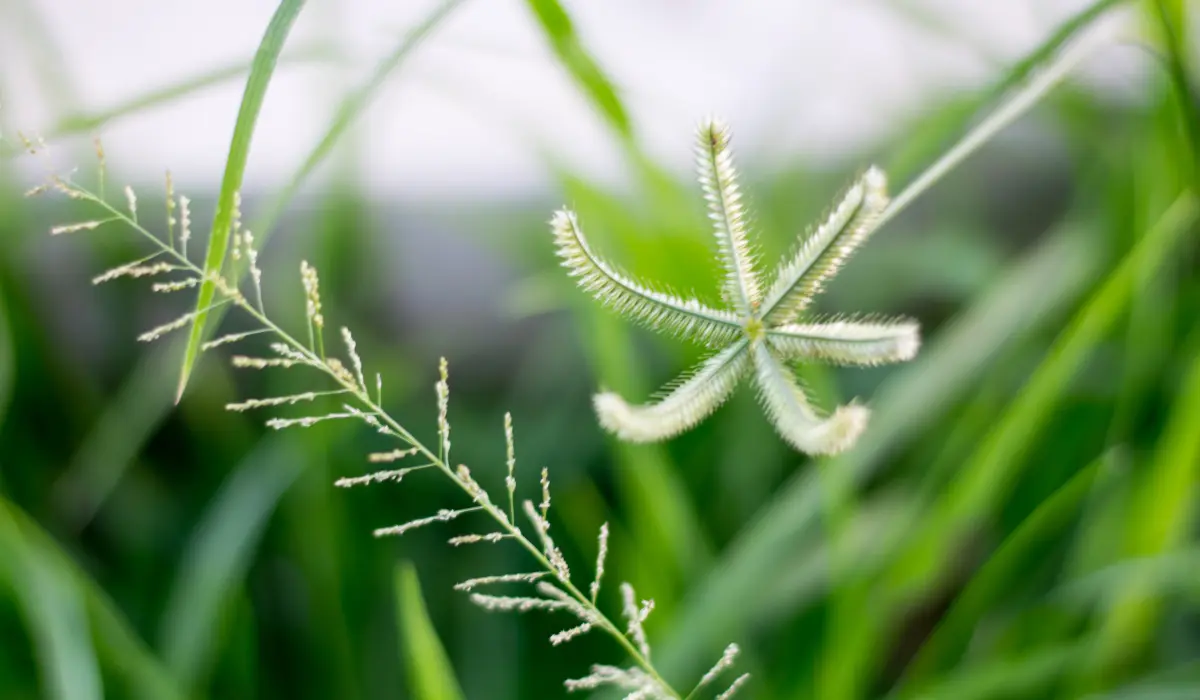
Goosegrass is another annual weed that poses significant issues in lawns and gardens. Unlike Crabgrass, it prefers compacted soils and thrives in high-traffic areas, leading to unsightly patches.
It appears late in the growing season, often after Crabgrass has already established itself, giving it a competitive edge.
Aspects | Details |
Distinguishing Features | Flat, white, and wiry stems with tufts at the base. Characteristic clumping growth habit. |
How to Kill It | Aerate soil to reduce compaction and improve drainage. Use selective herbicides targeting annual grassy weeds. |
Yellow Nutsedge
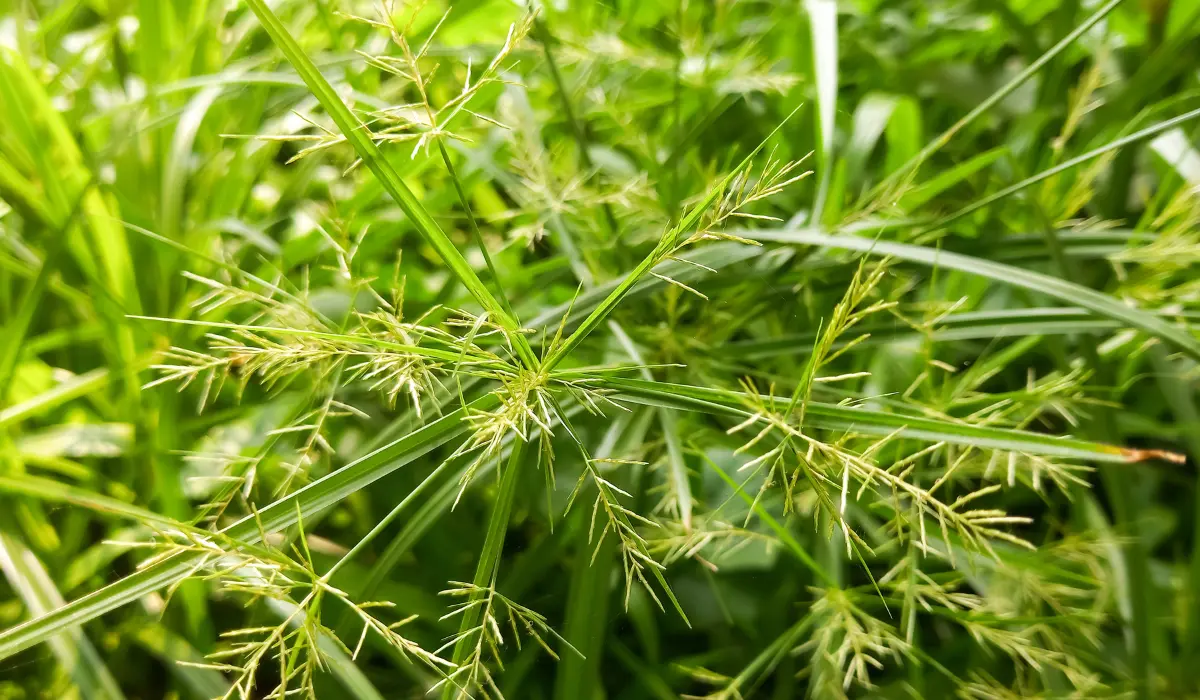
Yellow Nutsedge is a perennial plant that can regenerate even after being pulled out. It often invades poorly drained areas, where it quickly outcompetes turfgrass by creating dense mats.
Aspects | Details |
Distinguishing Features | Yellow-green, triangular stems, and tough texture. Forms rhizomes and nutlets that can overwinter. |
How to Kill It | Apply specific sedge herbicides post-emergence. Improve drainage and practice regular lawn maintenance. |
Common Nuisance Florida Weeds
Besides highly invasive weeds, Florida lawns also face various common nuisance weeds. These undesired plants can persist if not appropriately addressed.
Dandelions
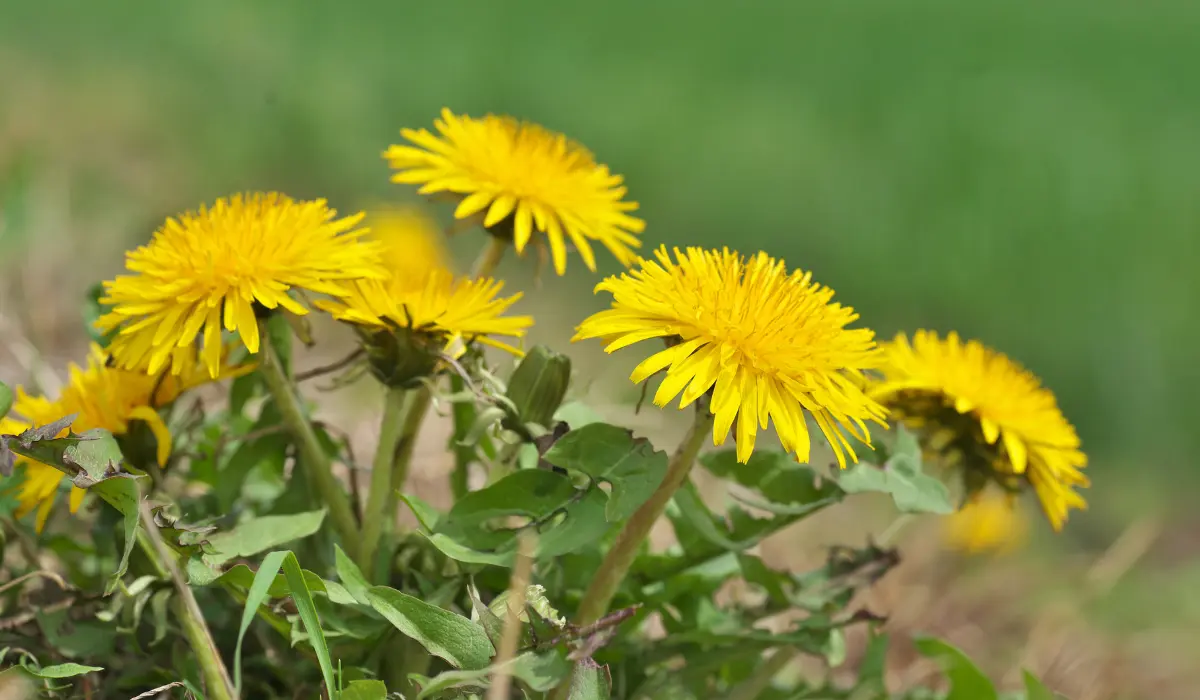
Dandelions are one of the most recognizable weeds. If left unchecked, they can easily take over a lawn, and their deep taproot makes them tough to eradicate.
Most problematic in the spring and fall, they pose a challenge due to their rapid spreading and resilient root system.
Distinguishing Features | Yellow flowers, puffball seed heads, deeply lobed leaves, taproot |
How to Kill It | Hand-pulling (make sure to remove the entire taproot), herbicides targeting broadleaf weeds. |
Spurge
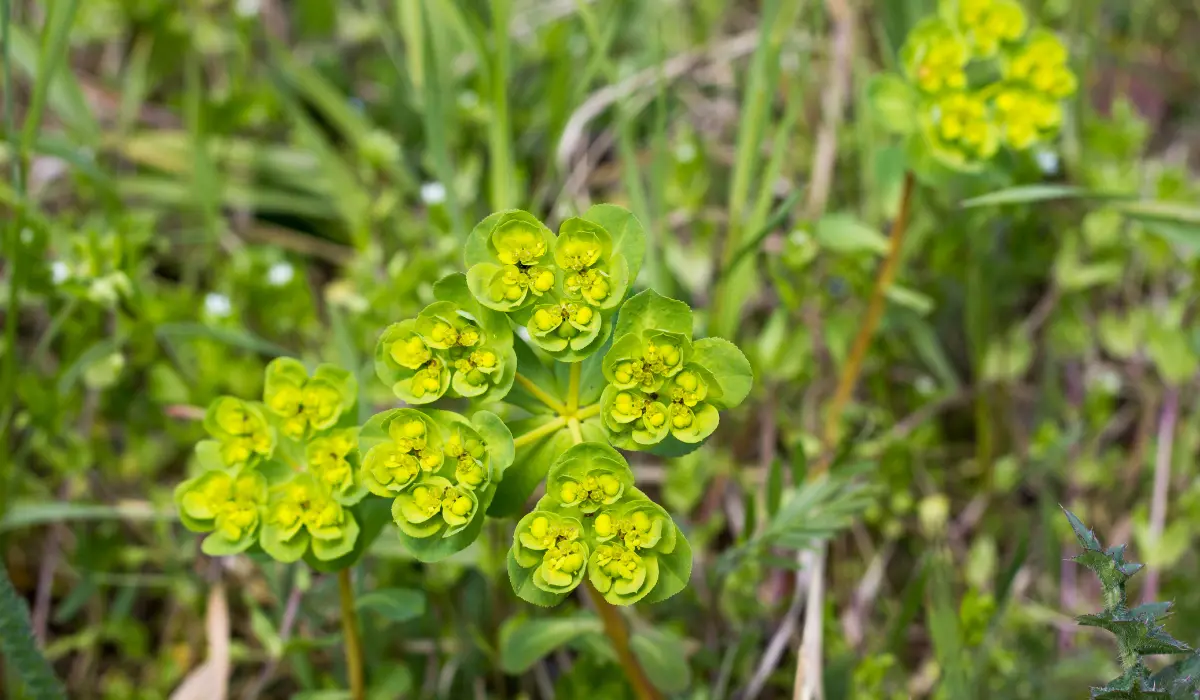
Spurge is a common sight in Florida's hot, sunny landscapes. It thrives in drought conditions and poor soil, making it a persistent pest.
Distinguishing Features | Low-growing, small round leaves spread along the ground, milky sap. |
How to Kill It | Hand-pulling, pre-emergent herbicides to prevent growth, and post-emergent herbicides for active plants. |
Chickweed
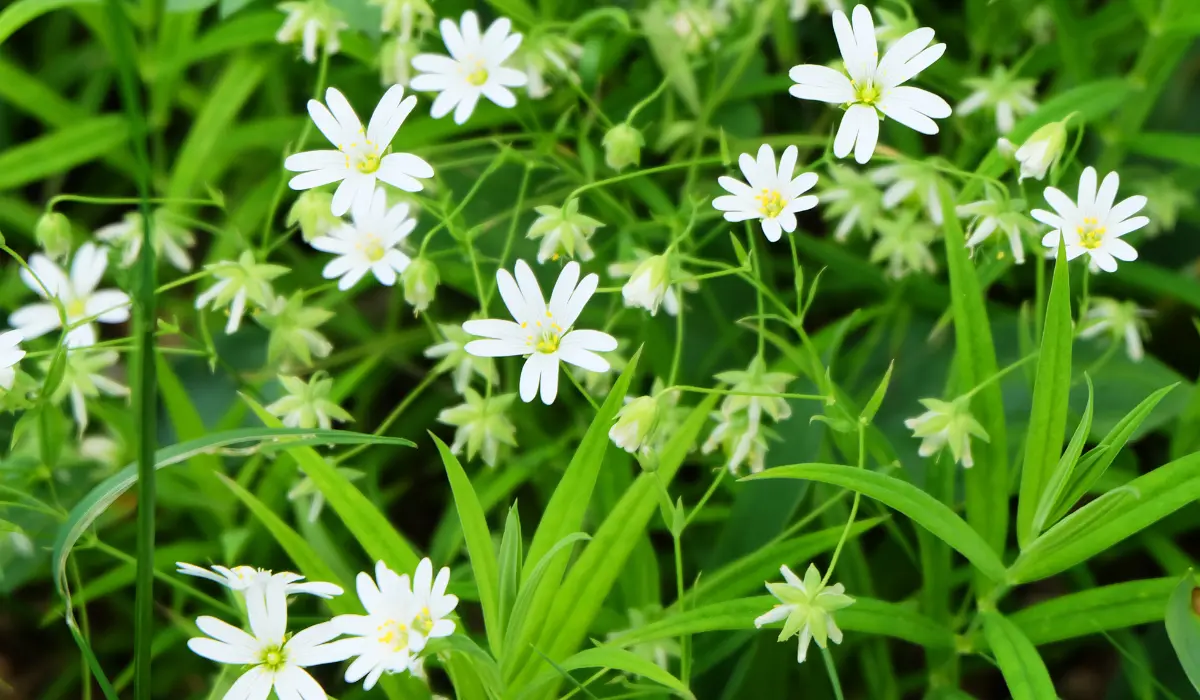
Chickweed is another frequent invader in Florida gardens. It thrives in cool, damp conditions. Since chickweed proliferates, it's crucial to control it early.
Distinguishing Features | Small white flowers with oval leaves forming dense mats. |
How to Kill It | Hand-pulling before flowers set seeds, using mulch to cover soil, and applying post-emergent herbicides. |
Florida Pusley
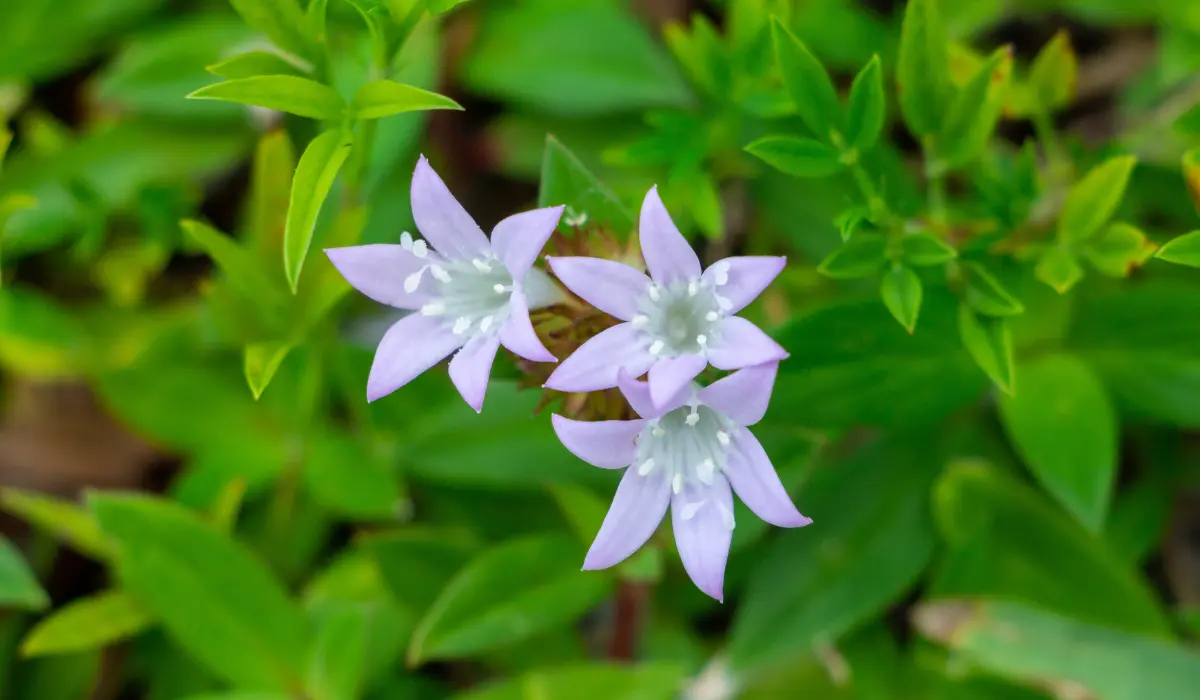
Florida Pusley often pops up in thin, weak spots in the lawn. Its deep root system makes it difficult to eliminate.
Distinguishing Features | Small white flowers, narrow leaves, deep roots. |
How to Kill It | Consistent mowing, hand-pulling, broadleaf herbicides. |
Broadleaf Plantain
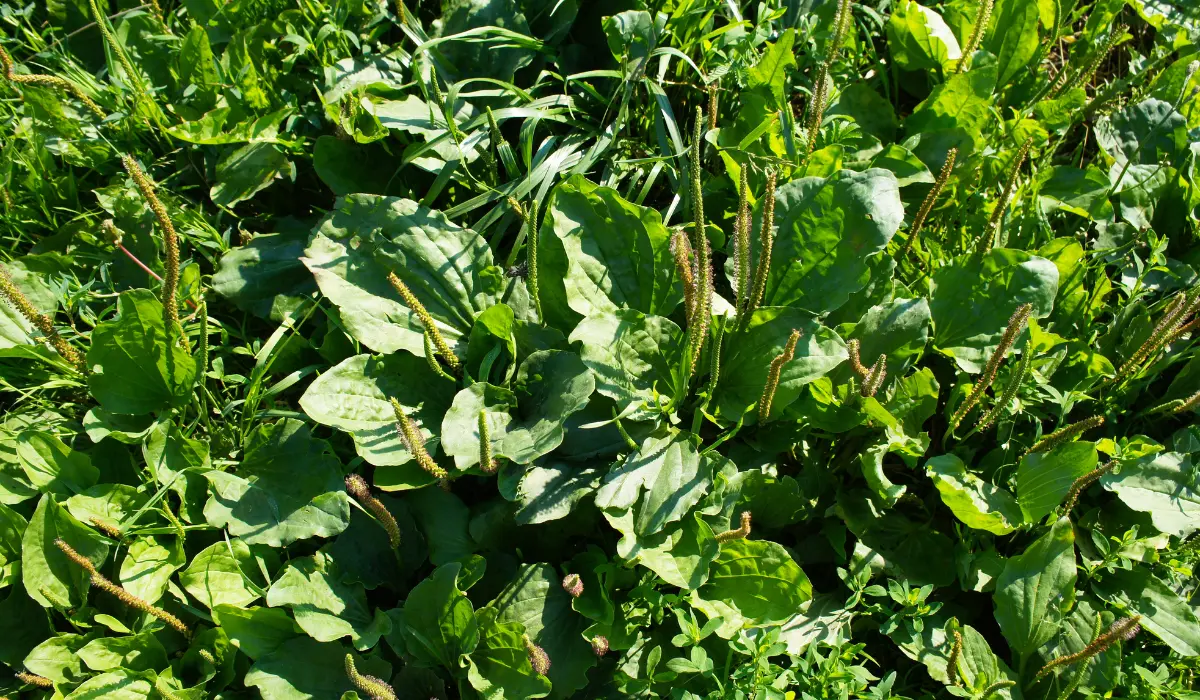
Broadleaf Plantain is a hardy weed that can crowd out grass. It thrives in compacted soil and areas with poor drainage. So, effective management involves both physical removal and improving soil conditions.
Distinguishing Features | Broad, oval leaves, tall seed spikes. |
How to Kill It | Regular hand-pulling, aerating soil, and applying broadleaf herbicides. |
Bull Thistle
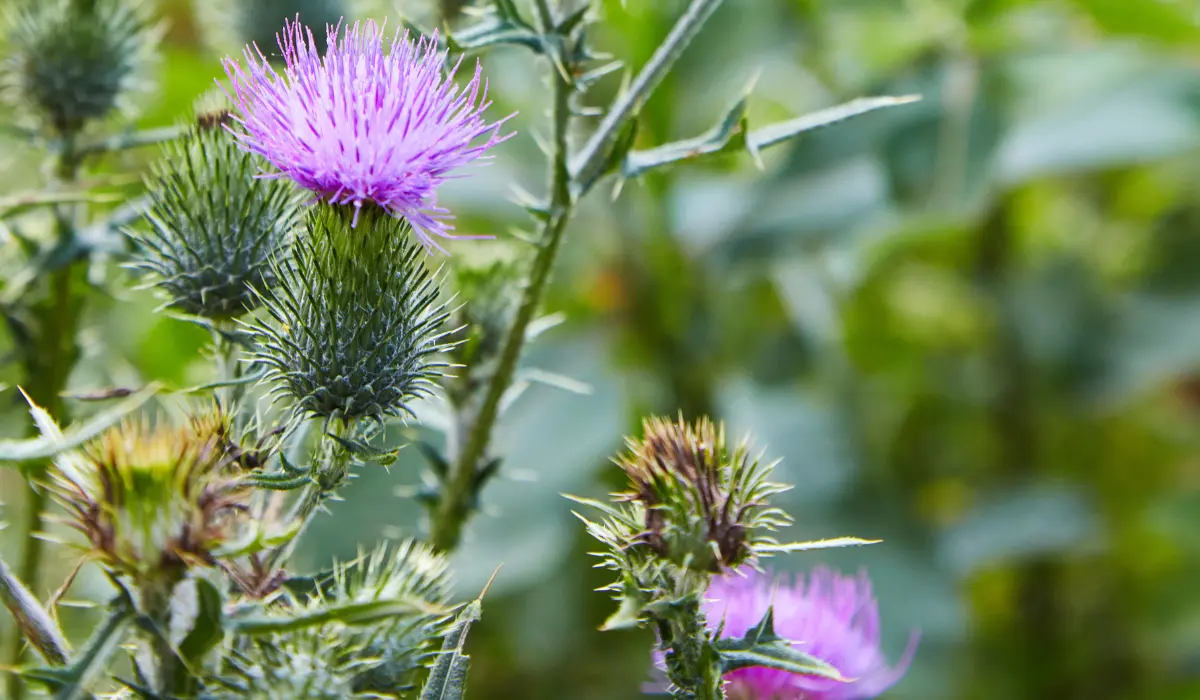
Bull Thistle stands out with its sharp spines and purple flowers. It can be particularly troublesome and painful to deal with.
To control bull thistle, early intervention is crucial to prevent its spread.
Distinguishing Features | Sharp spines, purple flowers, rosette formation. |
How to Kill It | Remove rosettes before they flower, use a sharp shovel to dig out roots, and apply targeted herbicides. |
Dollarweed (Pennywort)
.2407172100276.webp)
Dollarweed, or Pennywort, is a perennial weed common in Florida. It thrives in damp, shady areas and quickly overtakes lawns and gardens. Due to its extensive root system and ability to regenerate from small stem, leaf, or root fragments, it can be challenging to manage.
Distinguishing Features | Round, dark green leaves similar to silver dollars; thrives in damp areas |
How to Kill It | Use a selective herbicide targeting broadleaf weeds; improve lawn drainage and reduce moisture. |
Beggarweed
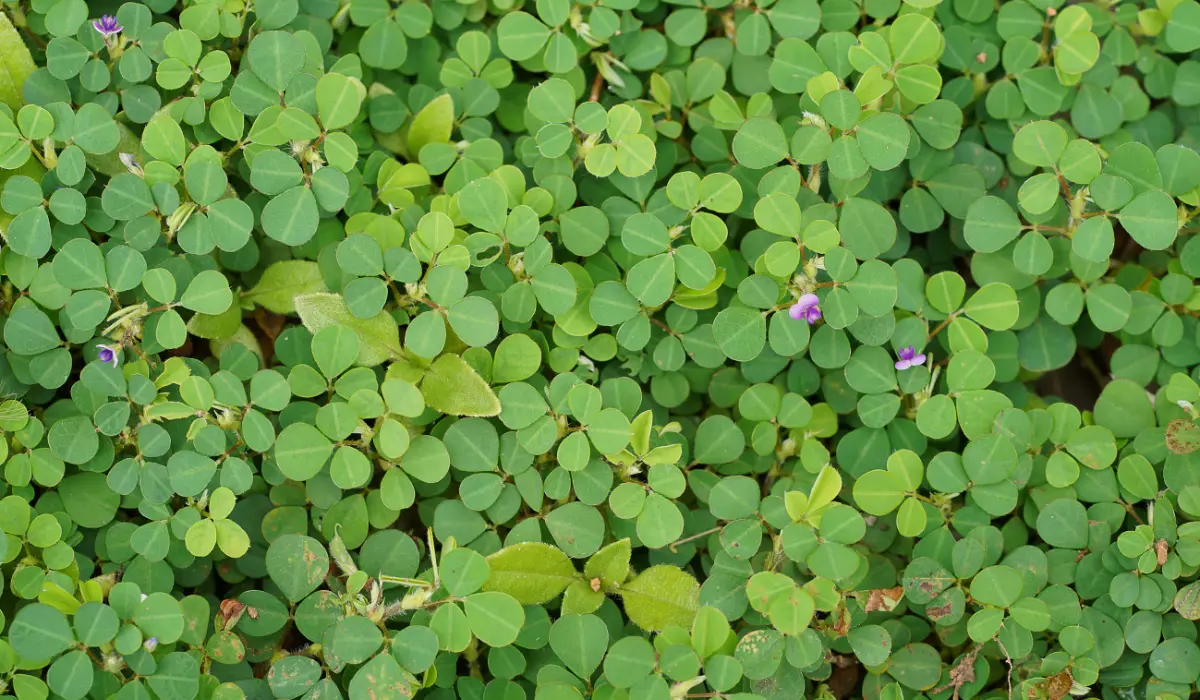
Beggarweed is a fast-growing annual or biennial that can crowd out desirable plants. Persisting in the soil for years, it spreads quickly, forming dense mats that suffocate other vegetation.
Distinguishing Features | Star-shaped leaves; small purple or white flowers |
How to Kill It | Apply pre-emergent herbicides to prevent seed germination; use post-emergent herbicides for existing plants. |
Yellow Woodsorrel
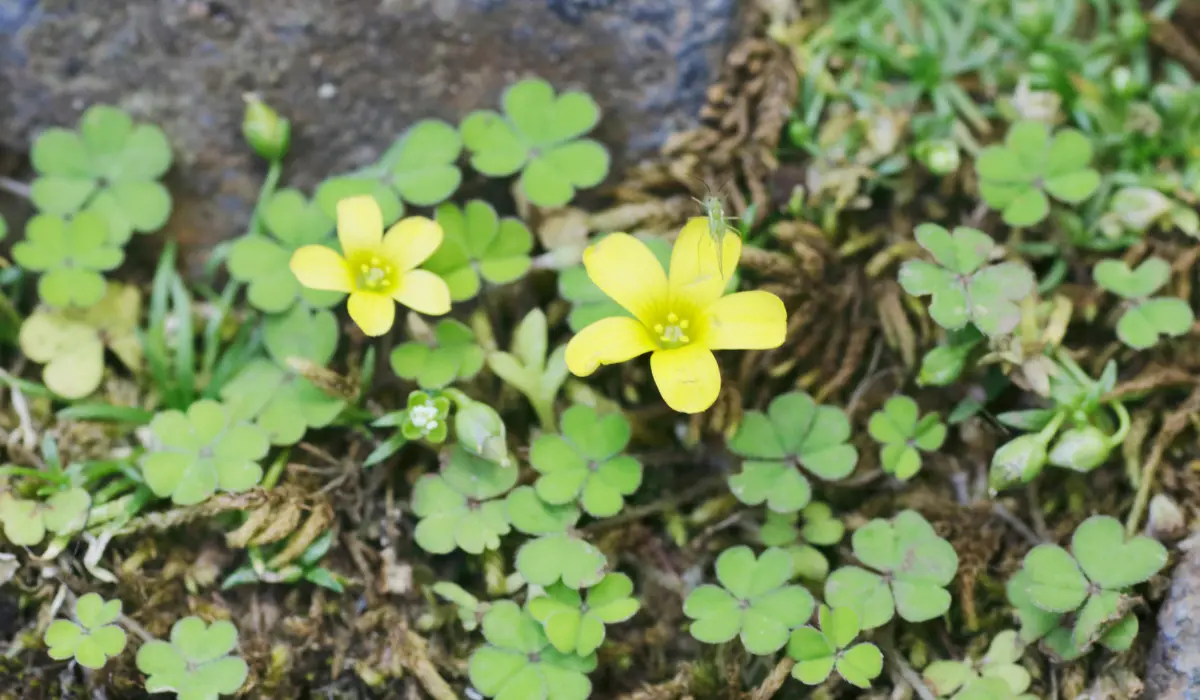
Yellow Woodsorrel is a perennial weed that can grow in various conditions and often invades lawns and gardens.
The plant produces seed pods that burst open, spreading seeds far and wide, making control difficult.
Distinguishing Features | Bright yellow flowers; heart-shaped leaflets. |
How to Kill It | Use a broadleaf herbicide; remove plants by hand before seed pods develop. |
Doveweed
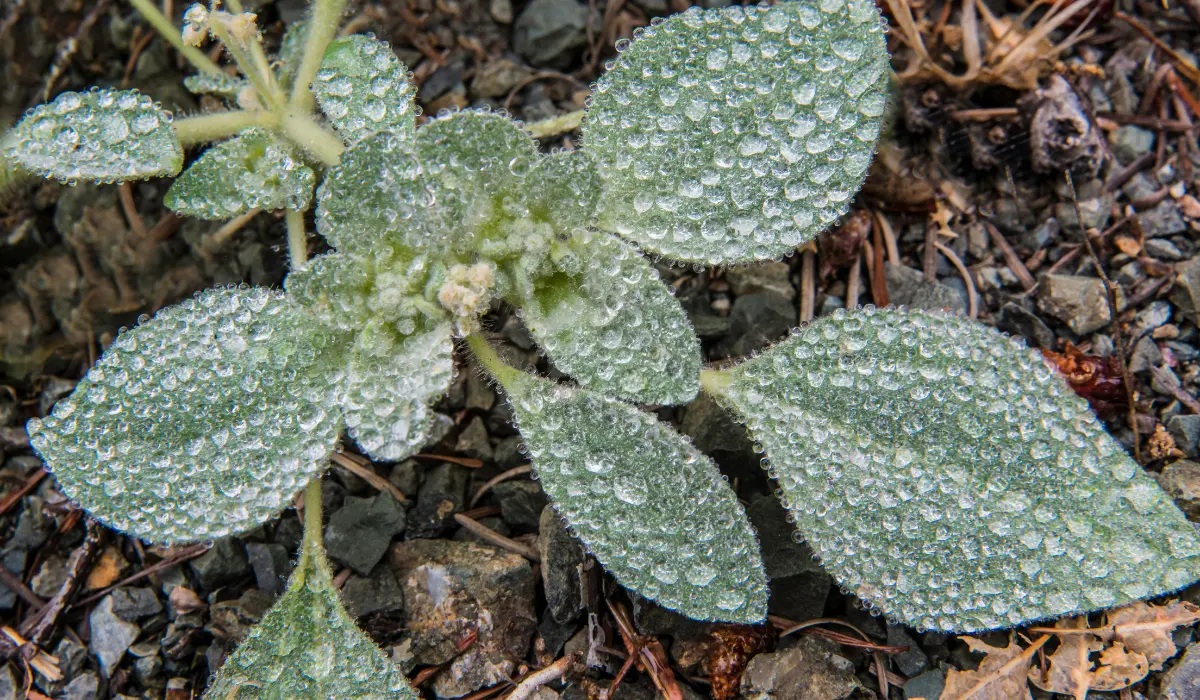
Doveweed is a moisture-loving weed that can quickly spread across lawns, especially in areas with poor drainage. Once established, this perennial weed is difficult to control and often requires multiple treatments to eradicate.
Distinguishing Features | Narrow, grass-like leaves; small blue flowers. |
How to Kill It | Apply broad-spectrum herbicides; improve lawn drainage to prevent future infestations. |
Matchweed
Matchweed is a low-growing perennial weed that prefers sunny locations and can spread rapidly through stolons. Removing it can be a hassle as it tends to regrow from remnants left in the soil.
Distinguishing Features | Small white flowers; bright green, coarsely toothed leaves. |
How to Kill It | Use a broadleaf herbicide targeting stolons; remove by hand, ensuring all roots are extracted. |
Asiatic Hawksbeard
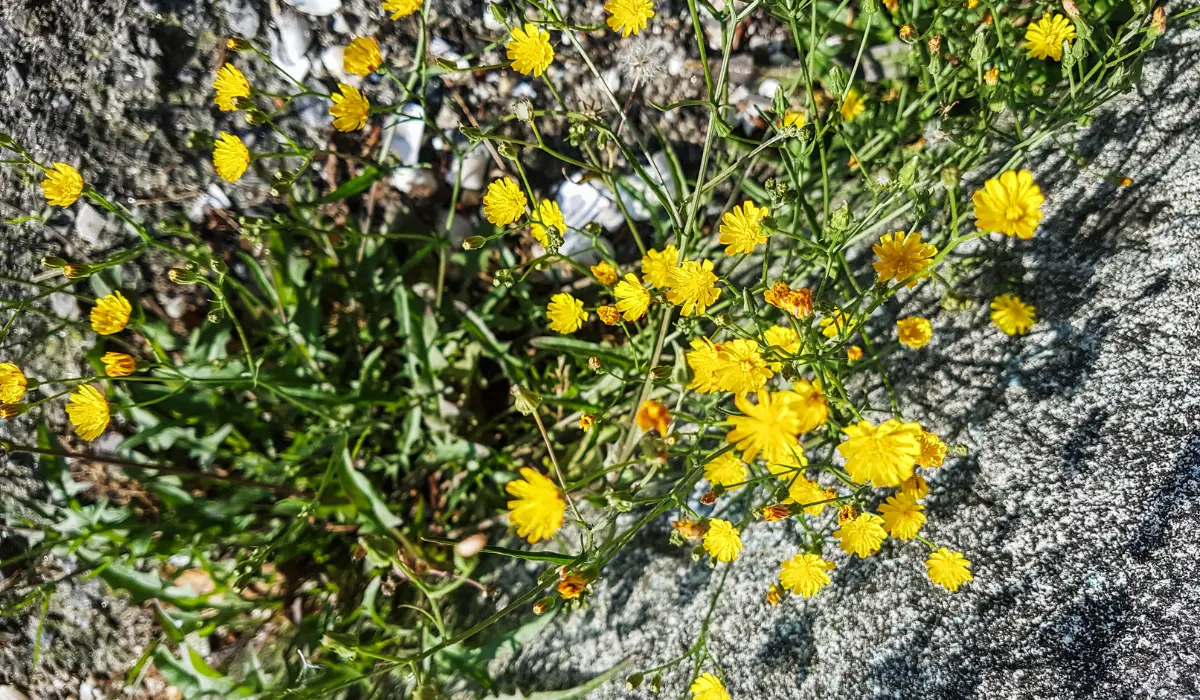
Asiatic Hawksbeard is a resilient weed that resembles dandelions. This biennial or perennial weed can quickly colonize disturbed soils and landscaped areas. Its ability to produce numerous seeds makes it a persistent problem in gardens and lawns.
Distinguishing Features | Bright yellow, dandelion-like flowers colonizing disturbed soils. |
How to Kill It | Apply a broad-spectrum herbicide; control early before seeds form. |
Purslane
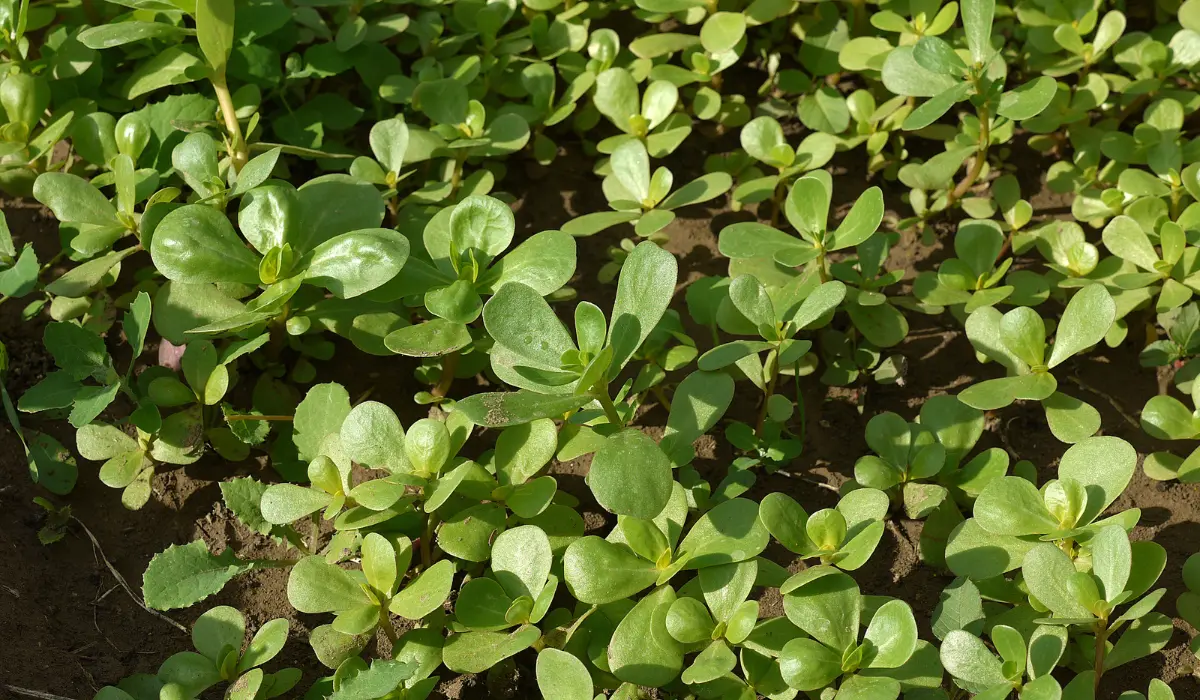
Purslane is a succulent annual weed that thrives in hot, dry conditions and sprawls across garden beds and lawns. Removing it can be challenging due to its ability to grow from small stem pieces left in the soil.
Distinguishing Features | Fleshy, spoon-shaped leaves; small yellow flowers. |
How to Kill It | Use a non-selective herbicide; hand-pull and ensure all plant pieces are removed to prevent regrowth. |
When to Call a Professional Lawn Care Company
If attempts to control weeds using over-the-counter products have failed, it's time to consult a professional lawn care company (like us at Native Pest Management) that has access to stronger treatments and knows how to apply them effectively.
By hiring professionals like us, we can also ensure that suitable herbicides and fertilizers are used after careful weed identification. We can determine the best products tailored to specific lawn needs, as different zones in Florida may require different approaches.
